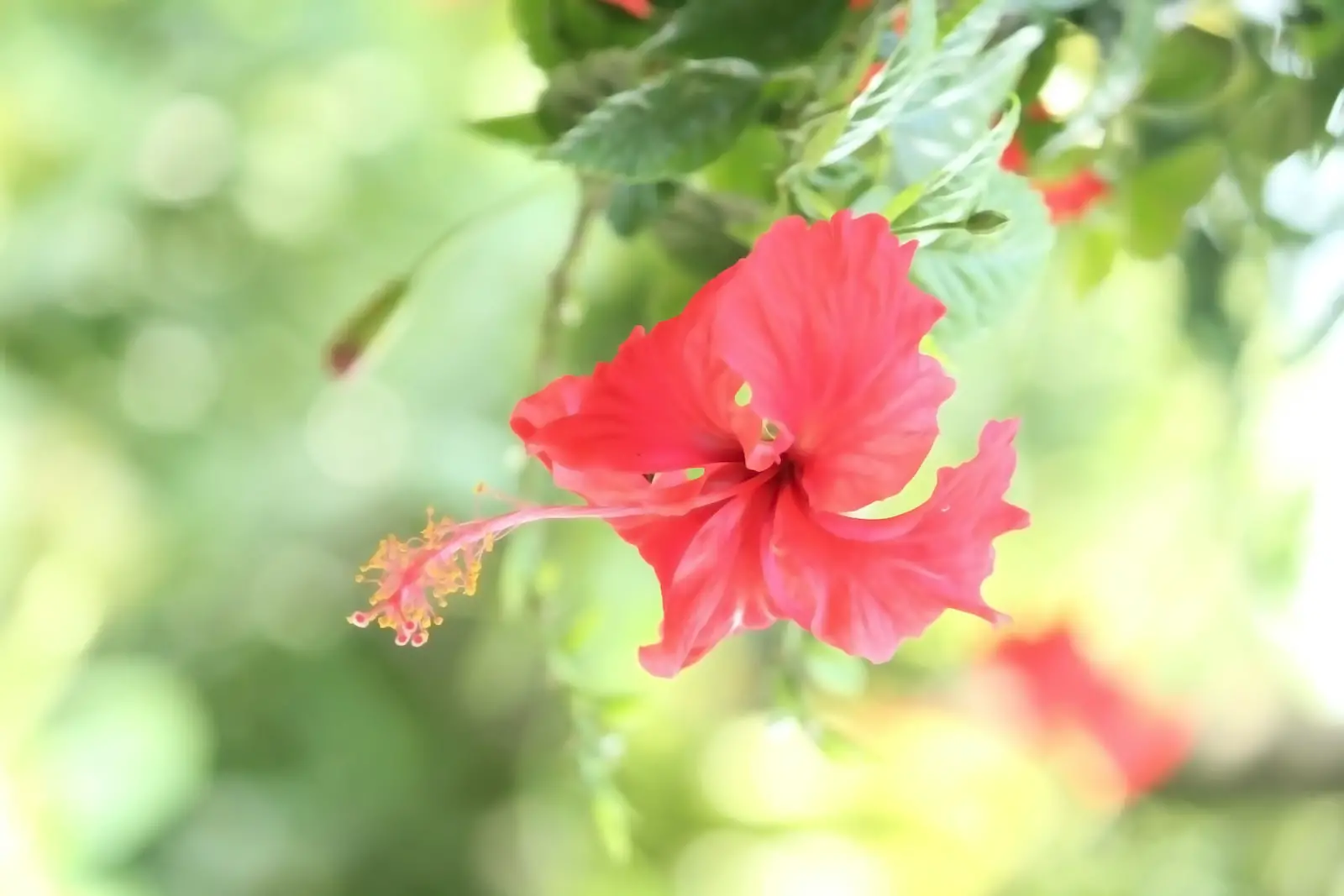The Hardy Hibiscus is a remarkable perennial that brings tropical flair to temperate gardens. Known for its gigantic, colorful blooms that can measure up to 12 inches across, this hardy plant thrives in zones where many tropical hibiscus would perish. It is an excellent choice for those who desire a touch of the tropics but reside in a non-tropical climate.
A part of the mallow family, the Hardy Hibiscus comes in a variety of species, each boasting beautiful flowers in hues ranging from pure white to deep red. Their lush, green foliage provides a lovely backdrop to their large, showy blossoms that bloom in late summer when many other flowers begin to fade. Adding to their appeal is their relative ease of care, provided their basic needs are met.
While the Hardy Hibiscus might look exotic, its cultivation doesn’t necessitate expert gardening skills. With proper care, including optimal sunlight, appropriate water, and regular pruning, these plants can flourish and be a spectacular addition to gardens, patios, or landscapes.
| Attribute | Details |
|---|---|
| Common Names | Hardy Hibiscus, Rose Mallow, Swamp Mallow |
| Botanical Name | Hibiscus moscheutos |
| Family | Malvaceae |
| Plant Type | Perennial shrub |
| Mature Size | 3-7 feet tall, 2-4 feet wide |
| Sun Exposure | Full sun |
| Soil Type | Moist, well-drained soil |
| Hardiness Zones | 4-9 |
| Native Area | North America |
Hardy Hibiscus Care
Caring for the Hardy Hibiscus requires some basic understanding of its preferences for sunlight, soil, and moisture. Planting in a location that receives full sun and has well-drained but moist soil will set the stage for a thriving plant. Regular watering, especially in the first few years of growth, is vital to establish the plant.
The Hardy Hibiscus also benefits from regular pruning to maintain its shape and encourage more blooms. Protecting the roots in winter with mulch can also ensure that the plant survives in colder regions. Being aware of its specific needs and monitoring regularly for any signs of pests and diseases will ensure a healthy and robust plant.
Light Requirement for Hardy Hibiscus
The Hardy Hibiscus thrives best in full sun, receiving at least 6-8 hours of sunlight daily. This sunlight exposure ensures the plant grows vigorously and produces those large, showy blooms that gardeners love.
Soil Requirements for Hardy Hibiscus
Well-drained but moist soil is preferable for the Hardy Hibiscus. Adding organic matter to the soil at planting time will provide the plant with the nutrients it needs to grow strong. A slightly acidic to neutral pH level of 6.1 to 7.8 is ideal.
Water Requirements for Hardy Hibiscus
Regular watering is essential, particularly during the growing season. The soil should be kept consistently moist but not soggy. In hotter regions or during dry spells, additional watering might be necessary.
Temperature and Humidity
Hardy Hibiscus is adaptable to a wide temperature range but thrives in the range of 60°F to 90°F. They can tolerate humidity but prefer moderate levels, as too much humidity can foster diseases.
Fertilizer
Feeding the Hardy Hibiscus with a balanced fertilizer in the early spring and mid-summer supports healthy growth and blooming. Avoid high-nitrogen fertilizers, as they can promote leaf growth at the expense of blooms.
Pruning Hardy Hibiscus
Pruning in late winter or early spring encourages new growth and more blooms. Removing dead or weak stems and cutting back the plant by about one-third helps maintain its shape.
Propagating Hardy Hibiscus
Propagating through cuttings or division is usually the most successful method. Cuttings taken in summer and rooted in a mix of sand and peat can produce new plants.
How To Grow Hardy Hibiscus From Seed
Growing Hardy Hibiscus from seed requires patience. Seeds should be soaked overnight and then sown indoors or directly in the ground after the risk of frost has passed. Germination can take several weeks.
Common Pests & Plant Diseases
Aphids
Aphids can be managed with insecticidal soaps or neem oil.
Fungal Diseases
Prevention through proper watering practices and fungicides can control fungal diseases.
Common Problems With Hardy Hibiscus
Yellowing Leaves
Yellowing leaves often indicate overwatering or poor drainage. Adjusting watering practices and improving soil drainage can rectify this issue.
Bud Drop
Bud drop may occur due to excessive dryness or inadequate sunlight. Ensuring proper watering and sun exposure will alleviate this problem.
Pro Tips
- Plant in a sunny location with well-drained soil.
- Regularly deadhead spent flowers to encourage more blooming.
- Protect the plant with mulch in winter in colder zones.
- Monitor regularly for signs of pests or diseases for early intervention.




